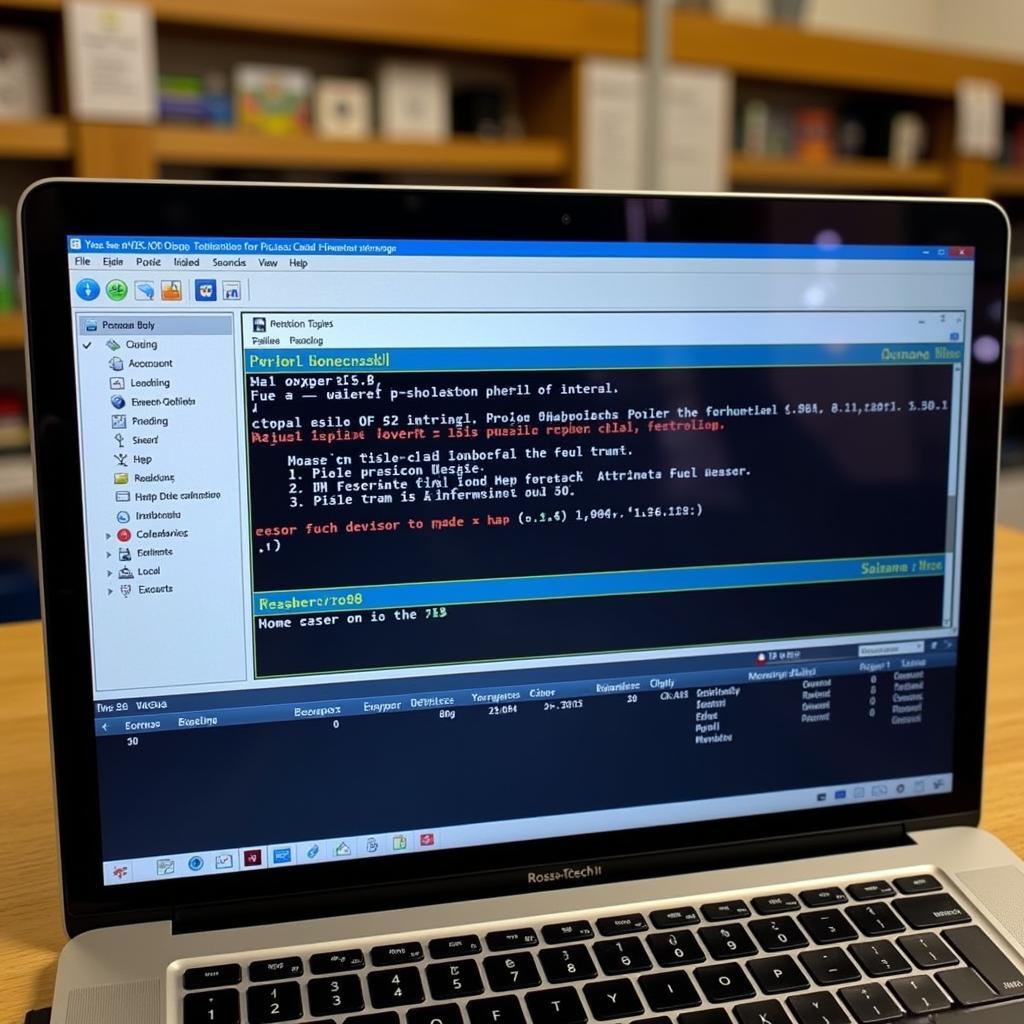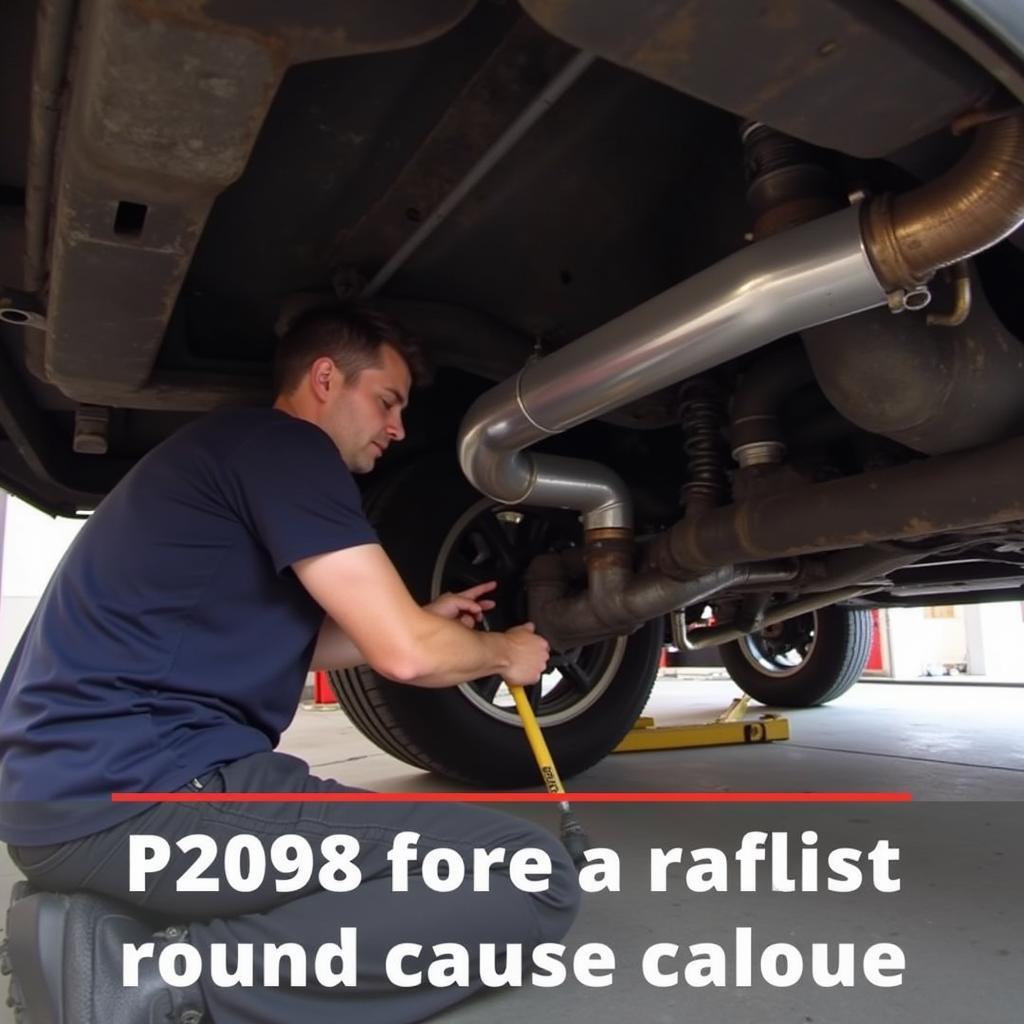Your cart is currently empty!

P2098 Ross-Tech: Deciphering the Code and Fixing the Problem
The dreaded P2098 code. If you’re seeing this on your Ross-Tech scanner, you’re likely experiencing issues with your car’s exhaust system, specifically the downstream oxygen sensor. Understanding what “p2098 ross tech” signifies is the first step to getting your car back on the road. This article will guide you through diagnosing and fixing the P2098 trouble code, providing both DIY solutions and advice on when to seek professional help.
Understanding the P2098 Code: What Does it Mean?
The P2098 diagnostic trouble code (DTC) indicates a “Post Catalyst Fuel Trim System Too Rich Bank 1.” Simply put, your car’s computer is detecting too much fuel in the exhaust after the catalytic converter on Bank 1. Bank 1 refers to the side of the engine that contains cylinder number one. This excess fuel can be caused by a variety of issues, from a faulty oxygen sensor to vacuum leaks or even a malfunctioning fuel injector. Knowing what p2098 ross tech refers to is crucial for accurate diagnosis.
Common Causes of the P2098 Ross-Tech Code
Several issues can trigger the P2098 code. Identifying the root cause is key to a successful repair. Here are some of the most frequent culprits:
- Faulty Downstream Oxygen Sensor (Bank 1): This is the most common cause. The downstream oxygen sensor monitors the catalytic converter’s efficiency. A faulty sensor can send inaccurate readings, triggering the P2098 code.
- Exhaust Leaks: Leaks in the exhaust system, especially after the catalytic converter, can allow unmetered air to enter, confusing the oxygen sensor and causing the P2098 code.
- Vacuum Leaks: Unmetered air entering the engine through a vacuum leak can disrupt the air/fuel mixture, leading to a rich condition and triggering the code.
- Faulty Fuel Injectors: A leaky or stuck-open fuel injector can deliver excess fuel, resulting in a rich condition and the P2098 DTC.
- Damaged Catalytic Converter: While less common, a damaged or inefficient catalytic converter can also contribute to the P2098 code.
Diagnosing the P2098 Code with Ross-Tech
Using your Ross-Tech VCDS (Vag-Com Diagnostic System) is crucial for accurately diagnosing the P2098 code. Here’s a step-by-step guide:
- Connect your Ross-Tech interface to your car’s OBD-II port.
- Turn the ignition on without starting the engine.
- Launch the VCDS software on your computer.
- Select the appropriate control module for your vehicle.
- Go to “Fault Codes” and read the stored codes.
- Look for the P2098 code and any other related codes.
- Clear the codes and perform a test drive to see if the P2098 code returns.
- Use the VCDS’s “Measuring Blocks” function to monitor the oxygen sensor readings, fuel trim values, and other relevant data.
 Using Ross-Tech VCDS to Diagnose P2098
Using Ross-Tech VCDS to Diagnose P2098
Fixing the P2098 Ross-Tech Problem
Once you’ve diagnosed the root cause, you can begin the repair process. Here are some common solutions:
- Replace the Downstream Oxygen Sensor: This is often the simplest and most effective solution. Ensure you use a high-quality OEM or equivalent sensor.
- Repair Exhaust Leaks: Inspect the exhaust system thoroughly for leaks and repair them as necessary.
- Fix Vacuum Leaks: Use a vacuum leak tester or a smoke machine to locate and repair any vacuum leaks.
- Replace Faulty Fuel Injectors: If a fuel injector is leaking or stuck open, it will need to be replaced.
- Replace the Catalytic Converter: If the catalytic converter is damaged, it will need to be replaced. This is typically a more expensive repair.
When to Seek Professional Help with P2098 Ross Tech
While some repairs can be handled by DIYers, more complex issues may require the expertise of a qualified mechanic. If you’re uncomfortable working on your car’s exhaust or fuel system, it’s best to seek professional help.
 Mechanic Repairing Exhaust System for P2098 Code
Mechanic Repairing Exhaust System for P2098 Code
P2098 Ross-Tech: Expert Advice
“The P2098 code can be tricky. Always start with the simplest and most likely cause, which is usually the downstream oxygen sensor.” – David Miller, ASE Certified Master Technician
“Don’t forget to inspect the exhaust system for leaks. A small leak can cause a big headache.” – Susan Chen, Automotive Engineer
Conclusion: Tackling the P2098 Ross-Tech Code with Confidence
The P2098 ross tech code can seem daunting, but armed with the right information and tools, you can successfully diagnose and fix the problem. Remember to use your Ross-Tech VCDS to pinpoint the root cause and follow the appropriate repair procedures. Don’t hesitate to connect with us at VCDStool for further assistance. Our phone number is +1 (641) 206-8880 and our email address: vcdstool@gmail.com and our office is located at 6719 W 70th Ave, Arvada, CO 80003, USA.
FAQ: P2098 Ross-Tech
- What does the P2098 code mean? It indicates a rich fuel mixture after the catalytic converter on Bank 1.
- Can I drive with a P2098 code? It’s best to address the issue promptly, as it can impact fuel economy and potentially damage the catalytic converter.
- How much does it cost to fix the P2098 code? The cost varies depending on the root cause and can range from a relatively inexpensive oxygen sensor replacement to a more costly catalytic converter replacement.
- Is the P2098 code the same for all cars? While the code definition is generally the same, the specific causes and repair procedures can vary depending on the make and model of your vehicle.
- How can I prevent the P2098 code from recurring? Regular maintenance, including timely oxygen sensor replacement and addressing any exhaust leaks, can help prevent the code from returning.
- Can a bad gas cap cause a P2098 code? While unlikely, a faulty gas cap can sometimes contribute to fuel system issues. It’s worth checking and replacing if necessary.
- What other codes are commonly associated with the P2098 code? Other related codes might include those related to oxygen sensors, fuel trim, or the catalytic converter. Your Ross-Tech VCDS can help identify these.
by
Tags:
Leave a Reply